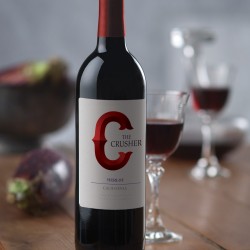Beer Snob | August 23rd, 2017

In my last column, I talked about what wine industry experts call “The Sideways effect,” which was the period of time after the release of the film “Sideways” in 2004 when the sales of pinot noir rose, and continue to rise, and merlot kind of, well, tanked.
I think merlot conceptually tanked more than anything, because the overall sales of merlot only declined about 2%. And 2% isn’t all that big a number, but it’s probably a long fall for the most popular varietal in the United States and for a grape that is one of the most planted on the planet.
But merlot is having an uptick in popularity once again. Recent reports say that the sale of merlot wines over $20 hopped 6% and wine drinkers here still report merlot as their favorite red wine. A few years back, merlot even got its own month in which you can guiltlessly imbibe -- it’s October. And November 7 is International Merlot Day, so it might be time to stock up on this delicious juice before fall hits. You may love your #roseallday, but get ready for #merlotme.
Merlot schmerlot. How’s it different from cabernet? Good question. Merlot and cabernet are a lot like Daenaerys and her dragons: dangerous on their own, but a full-blown assault when they’re together.
Simply put, merlot is slightly less tannic than cabernet (that’s the dryness you feel on your tongue when you drink wine). It’s usually a bit softer, rounder and velvety. Think the fuzz on the antlers on a young deer - that’s merlot. It’s soft to the touch, but there’s a lot of structure underneath it. As for cabernet, it’s much meatier, tannic and dense. Or the antlers sans fuzz.
Here’s a little history lesson for you: Bordeaux, a region in southwest France, makes a very legendary blend of cabernet, merlot and a few other varietals. So, yes, Bordeaux is a place you can visit (and I highly recommend it), but much like other French wines, it’s a reference to a specific style of wine.
In the US, and in many other parts of the world, we call our wines by the grape: merlot, sauvignon blanc, syrah, etc.
But in France (and Italy, too), wines are known by their region. You don’t ask for a pinot noir, you ask for a Burgundy. One does not order a sauvignon blanc, one orders a Sancerre.
And Bordeaux wines are delicious. In fact, if I had to drink from only one region for the rest of my life, it would probably be Bordeaux.
And in 1855, Emperor Napoleon III felt the same way. That year, Paris was to hold a really fancy art and industry exhibition called the Exposition Universelle, and Napoleon III wanted all the best wines from Bordeaux classified from best to worst, so they could be on display for visitors from around the world. And merlot is in a good chunk of these suckers.
This resulted in what is known as the Bordeaux Wine Official Classification of 1855. Wine brokers from around France ranked wines from First Growth (literally THE best Bordeauxs) to Fifth Growths (actually still really amazing wines).
Only four wines made the cut and are considered First Growth category: Chateau Lafite Rothschild, Chateau Latour, Chateau Haut-Brion and Chateau Margaux. If you are ever offered any of these wines, you MUST drink them.
There has only been one amendment to the First Growth wines since 1855 and that was in 1973 when, after YEARS of lobbying, Chateau Mouton Rothschild was finally elevated from a Second Growth to a First Growth. Now that’s persistence.
Some things you should know about merlot:
I love merlots. The first bottle of wine I ever received as a gift was a bottle of 1977 Stag’s Leap merlot from Napa Valley. It was incredible. And although there are some great merlots out there, whether you call them a Bordeaux, a Super Tuscan, a meritage or simply merlot, you can find a lot to love about this beautiful varietal.
My top picks for American merlots: Chateau Julien Merlot, Monterey ($13.99), Esser Merlot, Monterey ($15.99), The Crusher Merlot ($11.99), Keenan Napa Valley Merlot ($41.99).
I’m a little sad merlot has been neglected over the last decade, and really, it’s a little ironic considering people went nutso for merlot in the early 1990’s when “60 Minutes” did a special report called “The French Paradox,” which refers to the seemingly contraindicative notion that the French pretty much drown their food in fat, yet report some of the lowest incidence of heart disease.
And considering the United States has had a tough fight with the battle of the bulge, we might once again take a page from our Statue of Liberty-giving friends across the pond and enjoy a velvety glass with an old friend. Salut!
June 21st 2023
April 22nd 2021
March 4th 2020
February 26th 2020
February 19th 2020

_(1)_(1)_(1)__293px-wide.jpg)
__293px-wide.jpg)
_(1)__293px-wide.png)
_(1)__293px-wide.jpg)
_(1)__293px-wide.jpg)